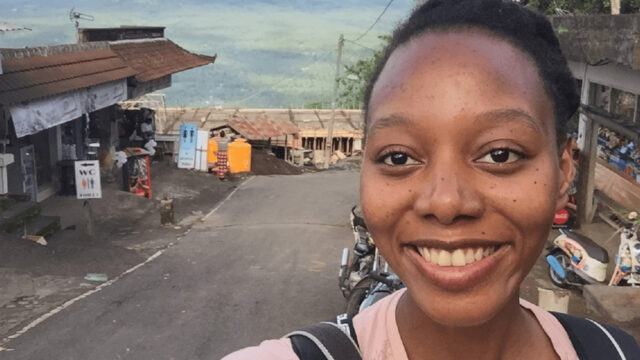I Will Go can make the difference.

The mission statement of the Seventh-day Adventist Church is to “make disciples of Jesus Christ who live as His loving witnesses and proclaim to all people the everlasting gospel of the three angels’ messages in preparation for His soon return.”
The apostle Paul captures the essence of the purpose of our movement in the following verse, “Now thanks be to God who always leads us in triumph in Christ, and through us diffuses the fragrance of His knowledge in every place” (2 Cor. 2:14).
Our focus is on God and His goodness, to make Him known. Our mission is Bible-based, Christ-centered, Holy Spirit-driven, community-targeted—and all for the glory of God.
Here is another mission statement: “Let every student be plainly instructed and earnestly pressed to consider well that the main end of his life and studies is to know God and Jesus Christ.” It belongs to Harvard University, founded in 1636. Less than 70 years after its founding, a group of New England pastors in the United States, concerned by Harvard’s mission drift, established a new Christian institution of higher education in 1701, namely, Yale University. Many of the top universities in the world had Christian roots and mission focus; there is very little trace of that focus left.
Mission drift is potentially the natural course of every organization, and it unfolds slowly, moving the organization away from its core purpose and identity. It takes focused attention, guided by the Holy Spirit, to safeguard against mission drift to rediscover our purpose—and nothing unites us as rediscovering our purpose.
Reach the World: I Will Go strategic focus (2020-2025) is a mission-focused tool voted by the General Conference (GC) Executive Committee in October 2019 following careful research and consultation with representatives from the world church and its regional entities.¹
I Will Go is an excellent tool to help us focus on aligning the unique gifts and resources that God has given us to take advantage of the opportunities “to diffuse the fragrance” of God’s love in the context of the three angels’ messages.
Additionally, the strategic focus of I Will Go will help us converge objectives and resources. The Seventh-day Adventist Church has a timely message for today, but a complex global multilevel organization. The danger of mission drift compels us to urgently rethink our practices. We cannot afford distraction on peripheral issues and divert attention by wasting time and resources on insignificant matters. We are called as God’s stewards of His mission to be united in purpose and function on the things that matter to Him. Operating in silos—vertically or horizontally—cannot be an option.
“Enfeebled and defective as it may appear, the church is the one object upon which God bestows in a special sense His supreme regard,” wrote Ellen White.² “Our success depends upon our unity. Our efficiency and the power of our influence depends upon our wise and unreserved cooperation with one another and with God.”³
KEY FOCUS AND ELEMENTS
There are four main building blocks of the I Will Go strategic focus:
- It involves all church members in reaching the world, inspiring and equipping them to use their Godgiven spiritual gifts in witness and service for Christ;
- It helps the whole church—members, pastors, administrative units, institutions, and agencies—to be more focused and effective in performing critical tasks to achieve Christ’s commission;
- It reflects themes and goals based on data collected through several research studies and has key performance indicators (KPIs) built in to monitor and measure progress of achieved objectives;
- It outlines 10 objectives, divided into the main categories of mission, spiritual growth, and leadership, with particular focus on Total Member Involvement, reaching the unreached people groups, especially in the large cities and the 10/40 Window, and aims to strengthen the spiritual growth and participation of children, youth, and young adults.
POTENTIAL LIMITATIONS
The purpose of I Will Go is to create a coherent, unifying, integrative framework for decisions and actions in the context of the mission statement by mitigating mission drift and strengthening convergence at every level.
Strategic thinking is just the first step in addressing the what and the why. I Will Go will be incomplete if the various stakeholders—members, pastors, administrative units, institutions, and agencies—don’t develop practical planning on the “how” and “when” at every level. This also requires feedback to the General Conference with their respective KPIs.
Another potential limitation of I Will Go is failing to address unchallenged assumptions when developing and implementing operational plans. We face the risk of losing relevance and effectiveness—of ceasing to be salt and light—when we become locked into the prison of precedent. COVID-19 is a perfect example of the need for us to be resilient and adaptable.
Here are some examples of unchallenged assumption: (1) church happens in church during three hours on Sabbath morning; (2) preaching is the most effective way of disciple-making; (3) pastors lead while lay volunteers follow; (4) more programs equal more impact; (5) the main mission of the church is to serve its members; and (6) disciple-making is to market our beliefs more attractively rather than live them more convincingly.
The question is Are we willing to sacrifice or challenge some of our familiar practice and precedence on the altar of a bigger purpose?
A third potential limitation of I Will Go can be summarized in a statement often attributed to George Bernard Shaw, “The single biggest problem in communication is the illusion that it has taken place.” The I Will Go strategic focus needs to be communicated at every level, but especially at the local church level. Otherwise we will struggle with cooperation across various levels to achieve a greater shared meaning that leads to better choice of application methods, unity of purpose, and a stronger conviction on mission and identity.
One last potential limitation of I Will Go is the illusion of control of what this strategic focus can and cannot achieve. God is looking for willing women and men who allow His power to flow through them to others to change the world from darkness to light. The Holy Spirit does not flow through tools and methods, but through trusting and willing women and men. Through prayer and obedience we can be catalysts to help bring about a future that is in alignment with God’s will.
Can you estimate the number of unique combinations we can create with six bricks of LEGO? The total number of possible unique arrangements is 915,103,765.⁴ Pray that God will grant us inspiration to respond “I will go, Lord; send me” to the God of limitless opportunities who is the author and perfecter of our mission.
¹ Read more at https://iwillgo2020.org/.
² Ellen G. White, The Acts of the Apostles (Mountain View, Calif.: Pacific Press Pub. Assn., 1911), p. 12.
³ Ellen G. White, manuscript 177, May 10, 1899.
⁴ www.mentalfloss.com/article/92127/how-many-combinations-are-possible-using-6-lego-bricks.








